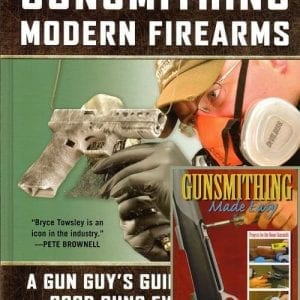The .308 Winchester is perhaps the favorite chambering for precision rifles used for long range shooting. Here are a few tips and suggestions on how to load great ammo for your bolt-action, precision rifle with the least amount of work.
Cartridge Case
The cartridge case is the foundation for a good handload. If you don’t have the case properly prepared, nothing else matters.
Start with new or once fired cases. There is no point in doing a lot of work to a case with an unknown history. Make sure they are all the same headstamp. It’s not a bad idea to weigh each case and throw out any that deviate more than a few grains from the average weight.
I don’t think brand matters a lot; I have used Federal, Hornady, Remington and Norma cases all with very good results. Note that internal capacity can vary with brands. That means you may have to adjust your powder charge weight if you work up a load with one brand and then switch to another.
If you are hard core, you can go with benchrest techniques like turning the neck and then size with a specialty die with neck sizing bushings for total control. But that’s a lot of work for a small gain with most rifles.
I find the best approach is to use a case that’s been fired in your rifle and neck size only. If you don’t have a neck sizing die, adjust the full length sizing die until it just contacts the shoulder of the fired case. This will resize the neck and partially resize the body, without pushing the shoulder back. But, it also prevents the shoulder from advancing. This method keeps the shoulder exactly where it needs to be for precise headspacing in your rifle. Even if you neck size, it’s a good idea to run the brass through a full length sizing die adjusted in this manner every few loadings. If the cartridges start to chamber hard, use the FL die to reset the body during the next loading.
After resizing, clean the lubricant from the cases in a vibrating or tumbling case cleaner with ground corncob media.
Trim all the cases to the same length. Deburr the outside of the case neck and chamfer the inside. I like the long tapered tools designed for VLD bullets. This creates a shallow angle to ease the bullet into the neck with less trauma.
The burr inside the case made by punching the flash hole through the head should be removed using a tool designed for this job. This will insure an even flow of flame from the primer to the powder. Always do this after trimming, as the cutter indexes off the case mouth. If the cases are all trimmed to the same length, you get a consistent result deburring the flash hole.
Square the bottom of the primer pocket with a primer pocket uniformer tool. These last two steps are “one-time” only and will not need to be repeated for any subsequent loadings.
Primer
The .308 Winchester uses a large rifle primer. Standard primers work for most loads, but if you are using a ball powder, a magnum primer with higher brisance is usually recommended. If the standard deviations are running high and accuracy is not what you expect, sometimes switching to a magnum primer, regardless of the powder, can make a difference.
You do have a chronograph, right? If not beg, borrow or steal one. No handloader can accurately evaluate his work without shooting through a chronograph. They are not expensive and without one you are mostly spinning your wheels. My primary chronograph for decades has been an Oehler Model 35P and I can highly recommend that model.
Just remember that standard and magnum primers are not interchangeable and a switch to magnum primers can cause a spike in pressure, so reduce the powder charge and work back up.
My preferred primer for .308 Winchester precision loads is the Federal GM210M match primer. Match primers are given more attention and additional inspection during the manufacturing process. This results in a more uniform and consistent primer.
Each primer must be seated fully in the primer pocket without crushing or distorting the primer. A hand tool works best because it allows you to “feel” the primer as it contacts the bottom of the primer pocket. This keeps the primer from being crushed or damaged from too much pressure and still insures that the legs of the primer anvil are all fully supported.
Powder
There are a lot of powders that work for handloading the .308 Winchester, but you can never go wrong with Varget.
For top accuracy, it’s best to weigh every powder charge.
Bullets
There are a lot of good .308 bullets out there. All I can say is, lately I am having good luck with 175-grain Barnes Match Burner bullets.
Bullet seating
Bullet-seating depth often makes a huge difference in accuracy. Seating bullets to the maximum overall cartridge length listed in the handloading manuals, 2.8 inches for the .308, is always a safe, conservative approach but it will rarely produce the best accuracy results. It is better to tune the overall cartridge length to the gun for which you are loading the ammo. By experimenting with bullet seating depth, a rifle’s accuracy can almost always be improved, sometimes rather dramatically.
The best starting point for any rifle cartridge is to seat the bullet so it has a gap of .010-inch to .020-inch before it engages the rifling. After shooting the ammo to test for function and accuracy, the seating depth can be fine-tuned with small changes of .005-inch, and then shooting groups to judge the effect on the rifle’s accuracy.
All bullets are not the same and you must determine the correct seating depth for each make, style and weight of bullet individually. The ogive shape and design will determine where the bullet will contact the rifling and this will vary from bullet to bullet.
One limiting factor for bullet seating depth can be the length of the rifle’s magazine. The bullet must be seated deep enough that the ammo will feed through the magazine without binding.
When working with seating depth it is easier to use a “competition” type seating die with a micrometer adjustment. Keep that in mind when ordering your dies. These dies also have some features that will aid in producing more accurate ammo.
One loading trick is to seat the bullet, then turn the cartridge 180 degrees in the shell holder and seat it again. This helps keep the bullet centered and it deals with any spring-back after the first time you seat the bullet so cartridge overall length consistency is improved.
Final Approach
If accuracy is the primary goal, it’s a good idea to check the concentricity. Place the case in a concentricity gauge and spin it while checking for bullet run out or a neck that is out of center with the case. Everything should spin on the same axis center with no wobble. Place the loaded ammo in a cartridge box and label it with all the load data and the date.
All this simply gets you through the door to the party. Now the fun starts and we get to make some noise. Shoot this ammo carefully from a solid, supported bench rest to evaluate accuracy. (Remember to use a chronograph!)
Once you have the best bullet and powder charge, experiment with bullet seating depth to see if accuracy is improved.
If you simply can’t make a load shoot, you should probably switch powder or bullets. But always change only one thing at a time. This applies to components as well as variations in charge weights or bullet seating depth.
It may take a few trips to the range to tweak the ammo to perfection, but range trips are what it’s all about.













